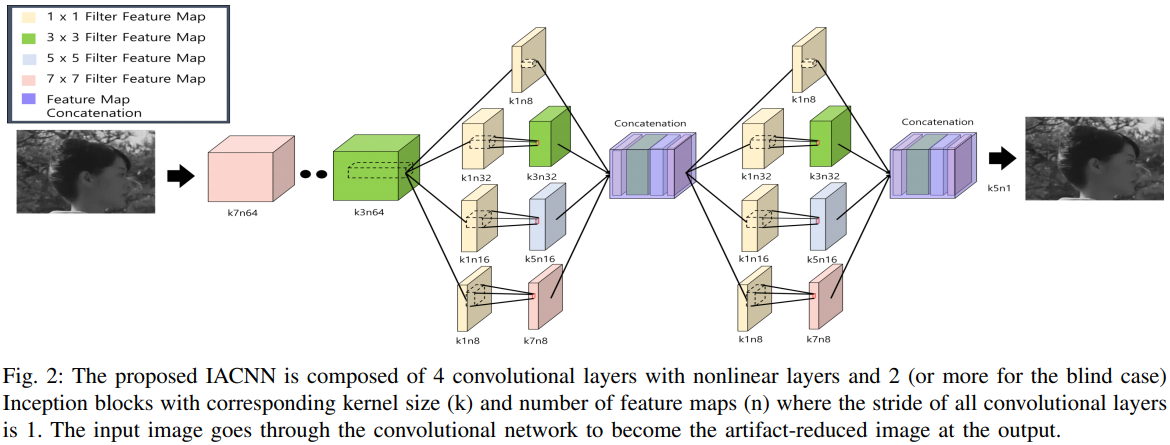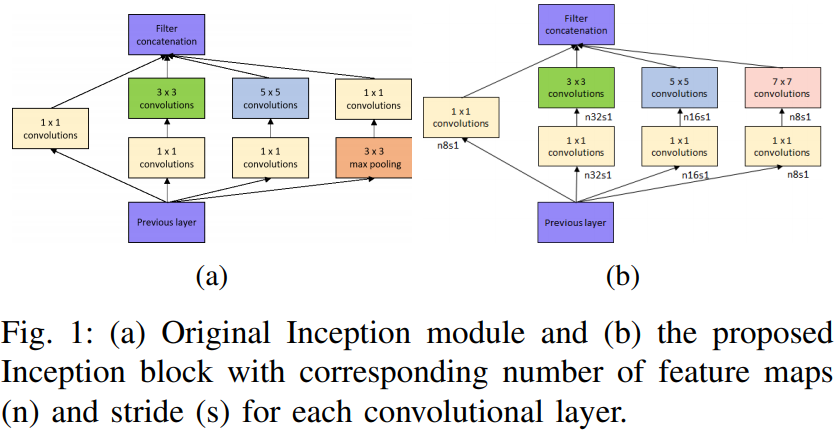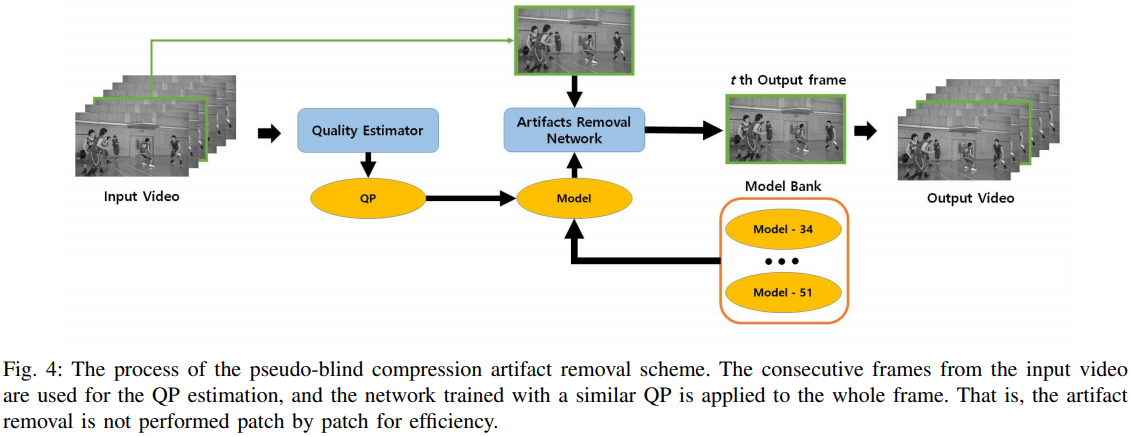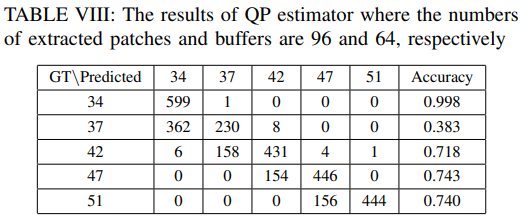table of Contents
TCSVT published in 2019.
This paper presents both a compression coefficient prediction and compression distortion function unblinded to pseudo - Blind (pseudo-blind) to the compression distortion network. The network is modified on the basis of Inception, and adding a compression factor predictor network.
Introduction, review of related work, the causes distortion of this article are written very generally, we see a method like.
It is worth mentioning that this could be the first to try the "blindness" QP reinforced paper, but! Authors prepared a four enhanced network, deal with four kinds of predicted QP. Therefore, in the strict sense is not blind.
Unblinded enhance network structure
Overall:

Local Inception module:

Training goal
Minimize \ (L_1 \) loss.
4 kinds of QP in HEVC: 34,37,42,47 trained four networks.
Compression coefficient prediction subnetwork
Network architecture
This is a 19-storey, \ (3 \ Times 3 \) VGG network, the amount of convolution parameters of up to 5.8M.
The block decision result obtained frame QP QP predictor
Note that we do not apply the block is a smooth region. The reason: the verdict of these blocks is very unstable and difficult to reflect QP information. Therefore, we extract the block with rich textures.
When the frame QP is determined, we take the decision result 50 blocks most poor results. I.e., the result of the first 50 blocks maximum classifier confidence. Then voting to give final prediction QP.
To maintain the continuity of timing
In order to ensure inter QP has a certain continuity, the authors consider soft decision. Specific strategies reading papers.
The final big network like this, very simply do not need to explain:

experiment
We look at the accuracy of classifier:
